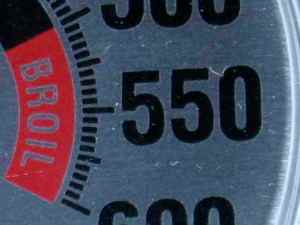Guy Fieri of the Food Network brings us todays video in the form of do-it-yourself fair food: Deep-Fried Pizza! Now I know what you’re thinking, or at least I think I know, and just give it a chance. Check out this three minute video and look at what that final product looks like. It’s actually pretty tasty looking!
Enjoy!
Ingredients
- Canola oil, for frying (amount determined by vessel used)
- 1 recipe Perfect Pizza Dough, recipe follows
- 2 tablespoons dried oregano
- 2 tablespoons chopped fresh basil leaves
- 1 cup pizza sauce
- 2 ounces whole pepperoni
- 4 ounces mozzarella cheese, coarsely shredded
- 1 teaspoon water
- 1/4 cup grated Parmesan
- 8 fresh basil leaves, for garnish
Directions
Preheat the oil to 365 degrees F. A deep-fryer is best, but if using a stove top method, fill a cast iron Dutch oven or heavy chicken fryer with oil about 4 inches deep.
Roll dough out and cut it in half. Stir the oregano and basil into the pizza sauce. Slice the pepperoni. Spread half of the pizza sauce on half of each side, of the dough, add the cheese and pepperoni, distributing evenly. Apply a thin line of the water to the edge of the dough and fold each over onto itself and press to seal.
Check the oil temperature and carefully add the pizza pockets. Cook for 2 minutes, turn over and cook for 1 minute more. Remove to a paper towel lined plate. Transfer the pizza to serving plates and garnish with remaining pizza sauce, Parmesan and fresh basil leaves.
Perfect Pizza Dough:
- 2 1/2 cups all-purpose flour
- 2 tablespoons olive oil, plus more for bowl
- 1 teaspoon sugar
- 1 teaspoon sea salt
- 1 tablespoon active dry yeast
- 1 cup warm water (110 to 115 degrees F)
Combine all the dry ingredients in bowl of food processor or stand mixer. Or if by hand, combine in a medium bowl. Add the warm water to small glass bowl. Sprinkle the yeast over and let it sit for 10 to 15 minutes. Add oil and yeast mixture to dry ingredients and depending on method using, combine until a dough ball forms. For food processor, pulse on dough setting until dough is smooth and elastic. For stand mixer, slow speed until dough is smooth and elastic. For hand method, knead on lightly floured surface until smooth and elastic. Form the dough into a ball. Lightly oil a large bowl, add the dough ball to it, cover tightly with plastic wrap or a well-floured tea towel, and set in a warm place or a 100 degree F oven until doubled, about 1 hour.
Punch down, and let rest for 5 minutes. Divide the dough in half for 2 large pizzas or into 4 equal pieces for calzones or small individual pizzas. Roll the dough into 1/4-inch thick rounds. Cooks Note: Can be made ahead and also freezes well.
Yield: 2 large or 4 small pizzas or calzones
Prep Time: 10 minutes
Inactive Prep Time: 1 to 2 hours
Ease of preparation: Easy































































